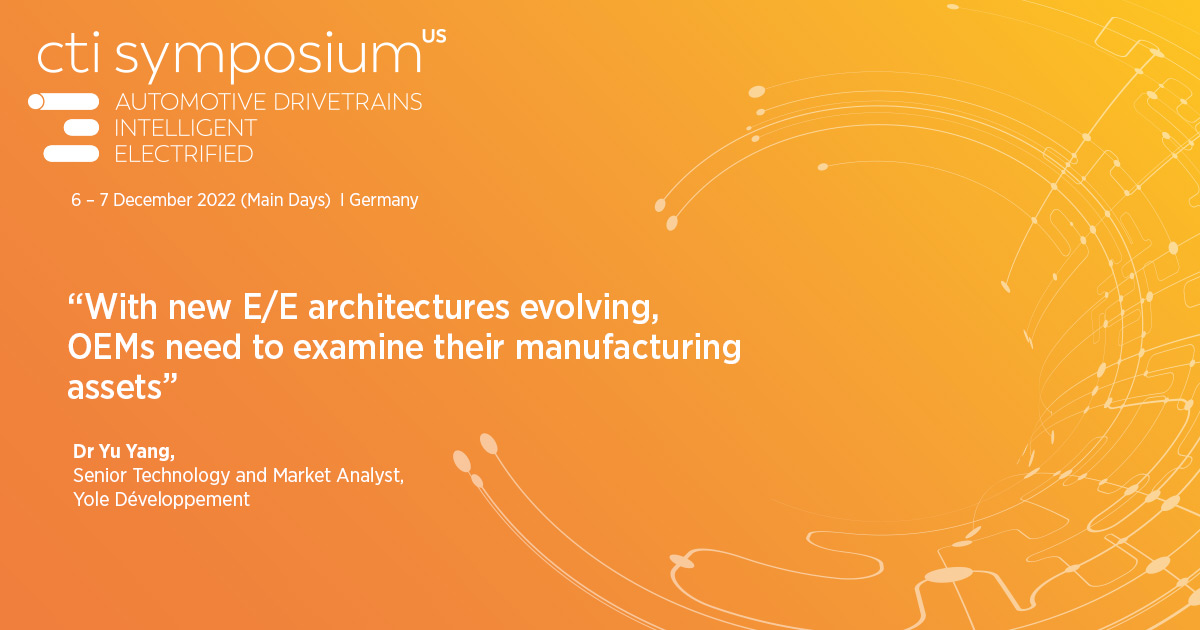
At the CTI symposium in Berlin from 6-7 December, Dr Yu Yang, Senior Technology and Market Analyst, Yole Développement, will speak about “The ‘invasion’ of consumer electronics players: new OEMs’ strategies and the impacts on the powertrain supply chain”.
We had the opportunity to interview Dr Yang beforehand.
Dr Yang, internet and consumer electronics players are more and more boarding cars – where are the boundaries between them and the OEMs?
Internet companies’ interests in the automotive industry are not new. All three leading EV start-ups in China, namely Nio, XPeng, and Li Auto, come from internet backgrounds. They are determined to be OEMs and bring some interesting user experiences, giving them a firm footing in the game. In that initial wave of investments, you also have companies like Google, Uber, and Baidu taking another approach of targeting Level 4 and Level 5 autonomous drive for revolutionary robotaxi applications. Of course, so far, we have seen that this second approach is much more challenging than first thought. Baidu has shifted gears to become an OEM (through a joint venture with Geely).
Alongside the efforts to attain high-level AV, there are also ideas of reproducing the ubiquitous OS for cars. Google’s Android Auto and Apple’s CarPlay are the leading ones. However, as this directly links to who will own and monetize driving data, OEMs will not easily give up. These are not easy decisions, as Apple’s countless flip-flops on its car strategy show.
So this is the context, but in my Berlin speech, I will focus more on consumer electronics.
The title of your speech includes the term “invaders”. What do you mean by that?
The expansion of consumer electronics players is a kind of second wave of ‘invaders’ where you find Apple, Sony, Xiaomi, Huawei, etc., and, equally interesting, Foxconn. Unlike the first batch of internet companies, these electronics players are much more familiar with the hardware while still bringing abundant experience in software, more than legacy OEMs. And even more powerfully, most consumer electronics companies have a good and large pool of end customers and the potential to integrate cars with the other aspects of their digital-savvy lives.
Which role will OEMs play there, and where do you expect shifts as to new players and traditional suppliers?
In our view, being an OEM will be the most feasible way, though then there is direct competition with legacy OEMs. But this might be an oasis for drivetrain suppliers, who will mostly suffer from the increasing trend of in-house manufacturing popular among OEMs. And the new entrant OEMs will likely focus less on mechanics-heavy manufacturing. See, for example, the split of work in the Sony-Honda venture.
But things will not just stop here. As the technologies will likely evolve to include centralized E/E architectures, the decoupling of software and hardware, and a highly integrated and standardized skateboard chassis, it would, in the short term, definitely not reach a point where contract manufacturing could be a choice at a large scale (not as today, only as a supplementary to in-house capacity). This means that all OEMs, even the new entrants, need to examine their manufacturing assets and make decisions on ‘make’ or ‘buy’ manufacturing capabilities. This should happen before reaching the holy grail of fully autonomous driving. Interestingly, when we discuss if there will be ‘Foxconn’ for cars, Foxconn itself is moving into automotive, with a somewhat mixed strategy. Clearly, it will ride the EV wave, but with the possibility of being both an OEM and a contract manufacturer.
Thank you for these insights, Dr Yang, we are looking forward to your speech in Berlin.
Questions: Gernot Goppelt
